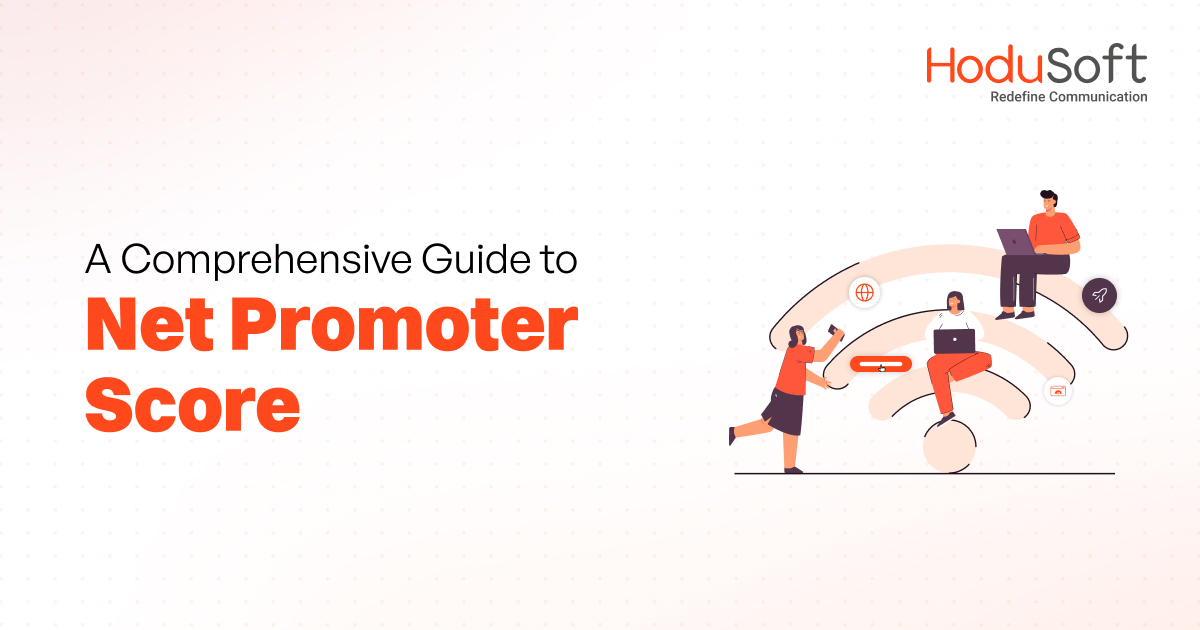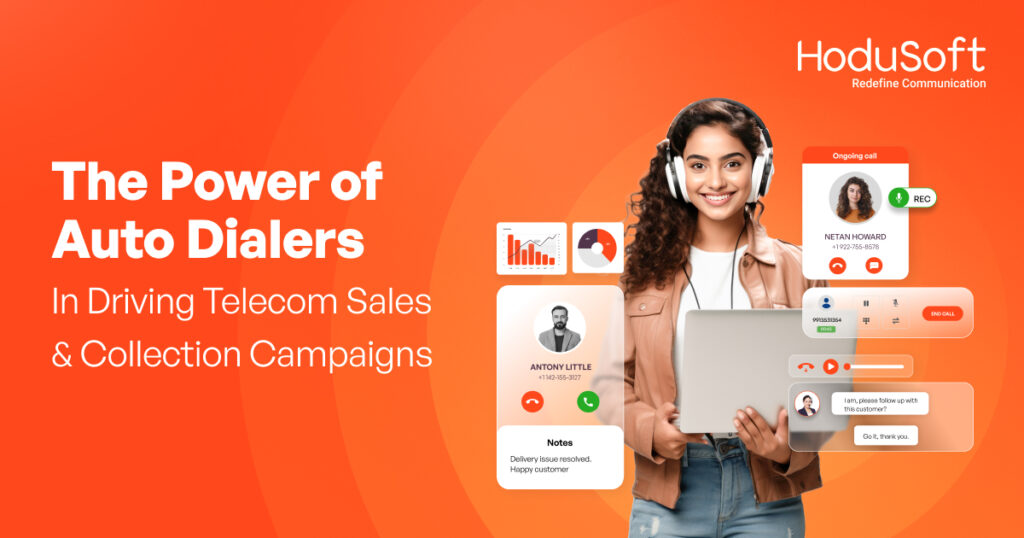A Comprehensive Guide to Net Promoter Score: History, Calculation Formula, Survey Tips
If you are an entrepreneur or a business professional, you probably know what the term ‘Net Promoter Score’ means. If not, then you must have been asked this question by at least one company at some point in your life:
“On a scale from zero to ten, how likely are you to recommend this brand and its products to a friend, family member, or colleague?” Well, that’s nothing but a question to gauge the company’s Net Promoter Score.
The fairly new metric, which turns 21 this year, is widely used across the globe to calculate customer loyalty.
In this blog post, we have discussed everything you need to know about Net Promoter Score, starting from its definition, a brief overview, its history, the method to calculate it, and more. Read on and thank us later.
- What is Net Promoter Score (NPS)?
- Brief History and Overview of NPS
- The NPS Formula: How It’s Calculated
- Explanation of the NPS Scale: Promoters, Passives, and Detractors
- What's the NPS Score Organizations Should Aim For?
- Importance of Measuring NPS for BPO Contact Centers
- How to Benchmark NPS
- Tips to Conduct the NPS Survey
What is Net Promoter Score (NPS)?
In purely technical terms, Net Promoter Score is a metric to compute customer loyalty. It can also be defined as a method to calculate customer experience based on surveys. .
Brief History and Overview of NPS
In 2003, Fred Reichheld, a partner at Bain & Company, and Satmetrix Systems, a San Mateo-headquartered customer experience management software development company, developed a metric to measure how well an organization treats its customers and how loyal are its customers.
Mr Reichheld introduced the metric in his Harvard Business Review article published that year, which was titled “The One Number You Need to Grow.” He called the metric the Net Promoter Score or NPS®.
NPS is a registered trademark of Fred Reichheld, Bain & Company, and Satmetrix Systems, Inc.
Over the years, NPS has become the most widely used customer loyalty metric in the world.
However, as per Mr. Reichheld, “It’s not the score that matters; it’s what you do with it to make promoters that count.”
The NPS Formula: How It’s Calculated
There are many different ways to calculate NPS.
But one of the best ways is to subtract the percentage of detractors from the percentage of promoters.
That’s the traditional method of calculating an organization’s NPS.
The formula for calculating NPS = Percentage of promoters – Percentage of detractors.
To give an example, if an organization has:
- 60 percent of promoters
- 10 percent of detractors
- 30 percent of passives
Its NPS would be 60-10=50.
Explanation of the NPS Scale: Promoters, Passives, and Detractors
A person taking part in an NPS survey can be put in any one of three categories according to the score they provide. The categories are:
Promoters
Promoters are enthusiastic customers who provide a high score, either 9 or 10. They are loyal advocates who recommend a company’s products or services to their friends, family members, and acquaintances. They contribute positively to a brand’s overall NPS. As per CustomerGauge, promoters are five times more likely to repurchase compared to detractors.
Detractors
Detractors are customers who give a low score of 0 to 5. More often than not, detractors are dissatisfied with a company and they don’t want to recommend its products or services.
As per CustomerGauge, compared to promoters, detractors are six times more likely to churn.
That’s why companies must identify their detractors and unhappy customers as well as address their issues as promptly as possible.
Identifying and addressing the concerns of detractors is crucial for improving your NPS and overall customer satisfaction.
Note: Although it may indicate that all those who provide a low score are detractors, that’s not always the case.
To give an example, in its NPS survey, a reputed operating system company asked a customer why they gave a score of one on a scale of five.
The customer wrote: “I need you to understand that people don’t have conversations where they randomly recommend operating systems to one another.”
Passives
Passives are those customers that offer a moderate score, typically ranging between 6 and 8.
Even if passives are satisfied with a company’s products or services, they aren’t as enthusiastic as the promoters.
While they might not actively promote a brand, they won’t discourage others from engaging with the business.
What's the NPS Score Organizations Should Aim For?
The average NPS score varies from one industry to the other. What’s considered a bad NPS score in one industry could be good for another and vice versa. So, there is no definite answer to the question.
To paraphrase noted investor and business person Joshua Kushner, the NPS of health insurers averages 4/100, while the NPS of Amazon, the biggest e-commerce company, is 74/100.
A study conducted by Retently ranked the top five industries with the highest average NPS. With an NPS of +74, the insurance industry ranks at the top. The financial services industry comes second with a score of +71. The technology and services (+64), retail (+61), and e-commerce (+50) sectors come third, fourth, and fifth respectively.
As per a stat by SurveyMonkey, the average NPS across all industries is +44. The top quartile of organizations has an NPS of +72 or higher, while the bottom quartile of businesses has an NPS of 0 or lower.
When it comes to a good NPS score in the BPO and call and contact center industry, a score of 50/100 or above is considered good by many industry experts.
That means a BPO company or call center has 50 percent more promoters compared to its detractors. For instance, if a BPO contact center has 65 percent promoters and 5 percent detractors, then its NPS is 50.
Importance of Measuring NPS for BPO Contact Centers
By measuring NPS, BPO contact centers can:
Gauge Customer Loyalty
The very purpose of NPS is to measure customer loyalty. As General Electric’s CEO Jeff Immelt famously said, “NPS creates a view of customer loyalty. The absolute score is less important than the trend. We learn from both promoters and detractors.”
The higher an organization’s NPS, the higher the chances of its customers remaining loyal and promoting the brand to their family and friends. NPS not only helps companies identify customer loyalty but also their business referral strategies.
Identify Areas of Improvement
Continuous improvement is indispensable for an organization’s growth and development. As renowned author Mark Twain rightly said “Continuous improvement is better than delayed perfection.”
NPS enables BPO call centers to identify areas where they can improve the way they provide customer service. As per a poll’s findings, half companies that took part in the survey said they use NPS to improve their customer experience.
Make Customer-Centric Decisions
Robert G. Thompson, the author of the groundbreaking report “Customer Experience Management” and the co-author of “The Blueprint to CRM Success,” said, “Customer-centricity should be about delivering value for customers that will eventually create value for the company.”
NPS enables businesses and organizations to keep customers at the center of every action and decision. By doing that, they are highly likely to not only win their hearts but also retain them for a long time to come.
Set a Quantifiable Benchmark
By calculating NPS, organizations can set a quantifiable benchmark. It enables organizations to compare customer loyalty and customer satisfaction within the industry and helps them set clear targets for improvement.
As Canadian-American author and motivational speaker Brian Tracy said “Benchmark your performance against your best competitors. Think how you can beat them next time.”
Track Customer Satisfaction
Did you know that seven out of every ten companies use NPS to track customer satisfaction? As per a study conducted by Delighted that’s the finding. And in the digital age, measuring customer satisfaction is extremely important. To quote Amazon’s founder Jeff Bezos, “If you make customers unhappy in the physical world, they might each tell six friends. If you make customers unhappy on the internet, they can each tell 6,000.”
Measuring NPS can help in tracking changes in customer satisfaction. Not just that, it can also help in monitoring the changes in the efficacy of initiatives aimed at enhancing customer experience.
Influence Customers’ Buying Behavior
Suppose there are two brands with identical products or services. One has an NPS of 60, the other has an NPS of 30 and the scores are publicly available. Which one do you think customers would prefer to buy? That’s right, the one with an NPS of 60.
According to research by Temkin Group, almost three-quarters of customers who base their purchasing decisions on recommendations are more likely to buy from a company with a high NPS. As per Frederick Reichheld, NPS scores can also be used to predict future customer behavior.
Drive Employee Engagement
Employee engagement is the magnitude to which employees feel that they are a part of a company. They not only have a sense of belongingness but they feel respected and have a voice in its decisions.
Now, the question comes, can organizations leverage NPS to drive employee engagement? The answer is a resounding yes! As per the findings of a study conducted by Delighted, two out of every five respondents said that they use NPS to drive employee engagement.
How to Benchmark NPS
When it comes to benchmarking NPS, there are many ways to do that. Here are some of them:
Compare with Other Companies in Your Industry
The first step to benchmark NPS is to start by comparing your NPS with other organizations in your industry. Once you find the average NPS in your industry, it will be easier for you to aim for an NPS that’s higher than the industry standard. Finding the industry average also provides valuable insights into your performance as compared to your counterparts.
Analyze Regions
After industrial comparison, it’s time to compare with businesses operating in your business’s area of operation. That’s because customer preferences and perceptions can be heavily influenced by regional variations. In this step, you can assess and identify any geographic nuances that may influence customer feedback.
Check Feedback Source
After receiving the feedback, check on the source and determine if it’s related to a specific product, service, or area. Determining the feedback’s origin can help you identify areas where you can improve as well as enable you to carry out targeted efforts to achieve that.
Establish Internal Standards
Take your first NPS as an internal standard and use it as a beginning point to measure your progress over time. Keep a constant track of the trends and changes in your NPS and focus on consistent iterations. After that, align your metrics with current customer expectations.
Tips to Conduct the NPS Survey
When it comes to conducting an NPS survey, there are many ways to go about it.
Define Your Objective(s)
First thing first, define your objectives. Different companies have different objectives for calculating NPS. What’s yours? Ask yourself: “Is it to determine customer loyalty?” “Is it to assess employee engagement?” “Is it to track customer satisfaction?” Asking such questions will give you clarity on what you want from your NPS survey.
Select the Right Tool for the Survey
When it comes to conducting an NPS survey, you have to make sure that you use the right tools. The most popular tool is email, which enables companies to get detailed customer feedback. Apart from that website pop-ups, mobile apps, and chatbot integration are also popular among businesses. A word of caution though, as per App Annie, mobile apps mostly have lower NPS compared to websites. Consider using multiple channels to reach a broader audience.
Craft the Survey
After selecting the right tools and channels, it’s time to tailor the survey questions for each channel. Organizations need to be extremely careful about the way they craft NPS questions as it can mean the difference between getting valuable insights and irrelevant information.
Select the Timing
As the age-old adage goes, “Timing is everything.” Selecting the right time to ask the NPS questions can impact response rates and accuracy. Questions asked during business hours are more likely to yield thoughtful responses and higher engagement than off-hours.
Collect Feedback
After selecting the timing, it’s time to start the NPS survey and collect the feedback. Make sure to collect the feedback immediately after customer interactions. That will enable you to know the true customer experience as well as improve insights.
Analyze and Act on Feedback
After getting the feedback, analyze by categorizing responses, observing trends, and reviewing comments. After that, develop a plan of action to address issues, implement changes, and follow up with customers to improve satisfaction.
Close the Loop
In the final step, inform customers of the actions you have taken after getting their feedback. Before communicating improvements, express gratitude. Ensure ongoing engagement to build trust and show appreciation and responsiveness.
All In All,
The extraordinary simplicity and effectiveness of NPS makes it an excellent strategic tool not only for BPO contact centers but for all types and sizes of organizations.
By consistently measuring NPS and working on the feedback, BPOs and contact centers can gauge customer sentiment and enhance customer experience.
At HoduSoft, we have assisted many brands around the world in calculating and enhancing their NPS through our cutting-edge communication systems.
If you are curious to know how leveraging the right communication tool can help you enhance your NPS, contact us today and book a free demo.



